LASSEN (Day 5 - part 3)
Continuing on the trail to Bumpass Hell...
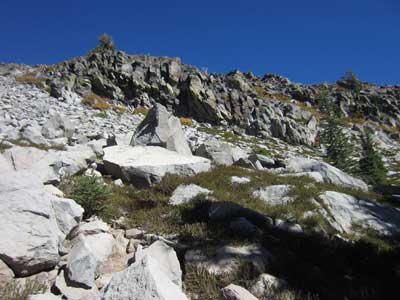



Imagine a super volcano right here!



Mountaineer, cowboy, explorer and early settler Kendall Vanhook Bumpass (1809 - 1885) first discovered this area in 1864. He had intended to mine the minerals as well as turn it into a tourist attraction. Unfortunately in 1865, while giving a tour, Bumpass broke through a thin crust above a hot (around 198 degrees F hot!) mudpot. His leg was badly scalded and eventually had to be amputated.
Our guide, after cautioning us to be careful where we stepped, that the surface was treacherous, suddenly concluded with Virgil that the "descent to Hell was easy" for stepping up on a slight inequality in the ground he broke through the crust and plunged his leg into the boiling mud beneath, which clinging to his limb burned him severely. If our guide had been a profane man I think he would have cursed a little; as it was, I think his silence was owing to his inability to do the subject justice... - Editor, Red Bluff Independent, 1865


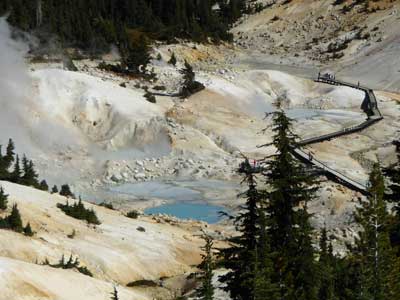
Our first distant views


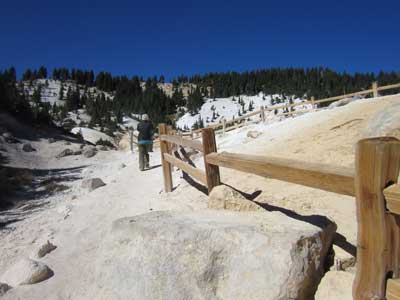


The area contains over 75 geothermal features.




Elevated walkways provided a safe way to view all the steaming, hissing and bubbling features.


(right) Click for a larger view
Bumpass Hell covers about 16 acres. It's Mount Tehama's main vent or "escape valve" for the underground volcanic heat about three miles below us. The magma superheats a reservoir of groundwater (up to 464 degrees F), which escapes via fissures to the surface. Some of it condenses again as it mixes with water and minerals near the surface.

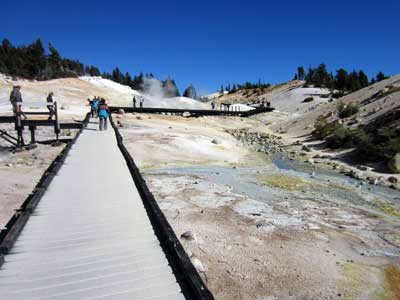
Sulfur and sulfates cause the beautiful colors, as well as the strong smell of rotten eggs!




Big Boiler is the hottest fumarole within a non-erupting volcano in the world. Steam temperatures here get up to 322 degrees F. Constant heat and churning action at the surrounding clay banks cause the steam vent to continue to grow in size.

Photo (before the safety of the walkway) from 1915
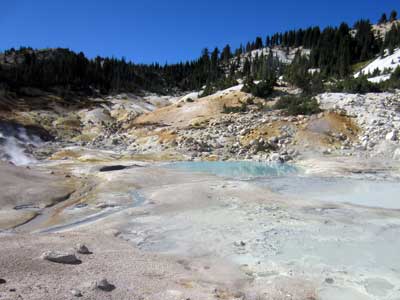







The bubbling mud was once solid lava rock, but heat, water, gases and time have turned it into clay.
A mudpot is the phase between a fumarole (steam vent) and a boiling spring. It has less water than a spring, but more than a fumarole. In wet years, however, it can become a spring, and in drier years, it can harden and become a steam vent.
return • continue

